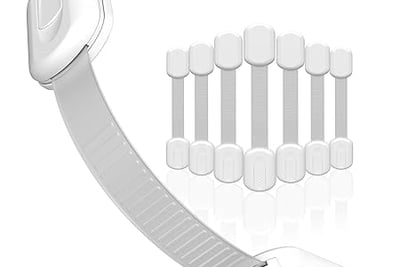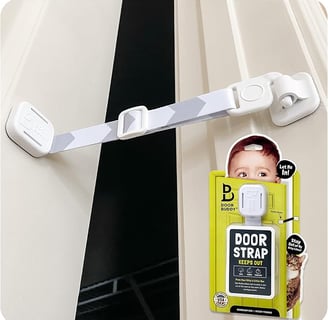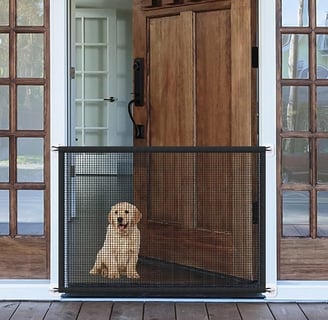Pet-Proof Your Home: Safety Must-Haves for Curious Cats and Dogs
5 min read


Understanding the Risks: Common Dangers for Pets
Household environments can present numerous risks for pets, particularly for curious cats and dogs who explore their surroundings with unrelenting curiosity. It is crucial to understand these risks in order to implement effective safety measures. One of the most significant dangers comes from toxic plants. Common houseplants, such as lilies, philodendrons, and poinsettias, can be highly toxic to both cats and dogs, leading to severe health complications if ingested. Therefore, pet owners should conduct thorough research on the plants inhabiting their homes, replacing hazardous varieties with pet-safe alternatives.
Chemicals also pose considerable threats to household pets. Common household cleaners, antifreeze, and even certain essential oils can have devastating effects if ingested or inhaled. For example, many popular cleaning products contain ingredients that can cause gastrointestinal issues or respiratory distress in pets. It is advisable to store these items in inaccessible cabinets and to consider using pet-friendly cleaning alternatives whenever possible.
Choking hazards are another serious concern in a typical home environment. Small items such as coins, buttons, or even toys can be inadvertently ingested by curious pets, resulting in choking or intestinal blockages. Such scenarios can demand immediate veterinary attention, which can lead to increased stress and expense for pet owners. To mitigate these risks, it is essential to conduct regular safety audits of the home, focusing on areas where small items may be within reach of pets.
By being proactive and aware of common household hazards, pet owners can significantly reduce the risk of accidents occurring in their homes. Investing the time to understand these dangers not only enhances the safety of cats and dogs but fosters a more enjoyable and secure living environment for all household members.
Essential Pet-Proofing Supplies: What You'll Need
When it comes to ensuring the safety of your pets at home, investing in the right pet-proofing supplies is crucial. These items not only protect your furry companions but also safeguard your belongings from potential damage. Below is a comprehensive list of essential supplies that every pet owner should consider for effective pet-proofing.
First on the list is a reliable baby gate. Baby gates are not just for infants; they also serve as an effective barrier to keep pets away from restricted areas in your home. Look for adjustable gates that can fit various door widths and maintain stability to prevent your curious cat or dog from making their way into potentially dangerous zones.
Next, cabinet locks are a must-have for any home with pets. These locks prevent inquisitive animals from accessing cleaning supplies, medications, or food items that could pose serious health risks. Childproof locks are an ideal choice since they are designed to withstand the tugging and pulling of curious pets while keeping hazardous materials securely stored away.
Additionally, pet-friendly screens offer a safe way to keep windows open for fresh air without exposing pets to outdoor dangers. These screens are designed to withstand scratches and provide a barrier that prevents your pets from jumping out, ensuring they remain safe indoors.
For households with dogs that love to chew, investing in chew-proof furniture covers becomes essential. These covers not only protect your furniture but are also designed to be stylish and easy to clean. They shield your sofas and chairs from sharp teeth, allowing you to maintain a pleasant home environment without the worry of unsightly chew marks.
In conclusion, the investment in essential pet-proofing supplies not only fosters a safe environment for pets but also enhances the overall comfort and functionality of your living space. Each item plays a unique role in ensuring the safety of both pets and owners alike, making them indispensable in any pet-friendly home.
Room-by-Room Guide to Pet-Proofing Your Home
Ensuring the safety of your pets within your home requires careful consideration of each room and its unique risks. This room-by-room guide outlines essential pet-proofing strategies to create a secure environment for your curious cats and dogs.
Starting with the living room, one of the most frequented areas, you should secure any loose electrical cords by tucking them away or using cord management products. Furniture should be stable, as pets may climb or jump on them; consider anchoring heavy items to prevent tipping. Additionally, be conscious of houseplants, as certain varieties can be toxic to pets. Instead, opt for pet-friendly plants to enhance your space while safeguarding their health.
In the kitchen, it is crucial to label all cleaning supplies clearly and store them in cabinets with child-proof locks. Pets are naturally drawn to the smell of food, so ensure that all edible items are stored securely at heights inaccessible to them. Remove any harmful items, such as sharp utensils and broken glass, from counters or tables. Implementing these changes minimizes the risk of accidents or poisonings.
Moving to the bathroom, keep your medications, toiletries, and cleaning products in enclosed cabinets. Consider installing child-proof latches to prevent curious pets from gaining access. Make sure to regularly dispose of any potentially hazardous items, such as empty containers or cleaning wipes. Furthermore, after each use, ensure that the toilet lid is closed to prevent pets from drinking from it or falling in.
Lastly, in the bedroom, be mindful of small objects that pets could ingest, such as jewelry or small toys. Store such items in drawers or designated containers. Additionally, secure cords for blinds or curtains to prevent entanglement, and consider using non-toxic cleaning products to maintain a safe airflow around your sleeping area.
By taking these thoughtful measures room by room, you can create a safe haven for your pets, making your home a worry-free space for both you and your furry companions.
Creating a Safe Environment: Enrichment and Training Tips
Creating a safe environment for pets requires not only the elimination of hazards but also the incorporation of enrichment and training strategies. Engaging dogs and cats in constructive activities fosters mental stimulation and helps mitigate potentially destructive behaviors. The use of safe toys that cater to their natural instincts is paramount. For dogs, interactive toys that dispense treats can keep them occupied and mentally engaged, which is essential for their well-being. Similarly, for cats, toys that mimic hunting behaviors, such as feather wands or laser pointers, provide excitement while promoting physical activity.
In addition to toys, setting aside time for daily play sessions is crucial. These activities create bonding moments, enhance your pet's physical fitness, and reduce anxiety-related behaviors. Moreover, safe spaces specifically designed for enrichment, such as climbing trees for cats or obstacle courses for dogs, can provide a myriad of stimulating experiences. Introducing new challenges regularly will keep pets curious and engaged, reducing the likelihood of them seeking out their own, potentially dangerous, stimulation.
Training is equally essential in maintaining a secure environment. Basic commands such as "sit," "stay," or "leave it" can be effective in redirecting unwanted behaviors and instilling good manners. Positive reinforcement techniques—rewarding desired behaviors with treats or praise—help pets learn what actions are acceptable, thereby fostering a respectful bond between owner and animal. It is vital to ensure consistency in training to achieve long-term success.
Redirecting behaviors that can lead to accidents, such as chewing on furniture or jumping onto counters, should be handled gently. Offering suitable alternatives and reinforcing those behaviors teaches pets the boundaries of your home. By focusing on enriching experiences and effective training, you can create a harmonious and safe space that benefits both you and your pets.











